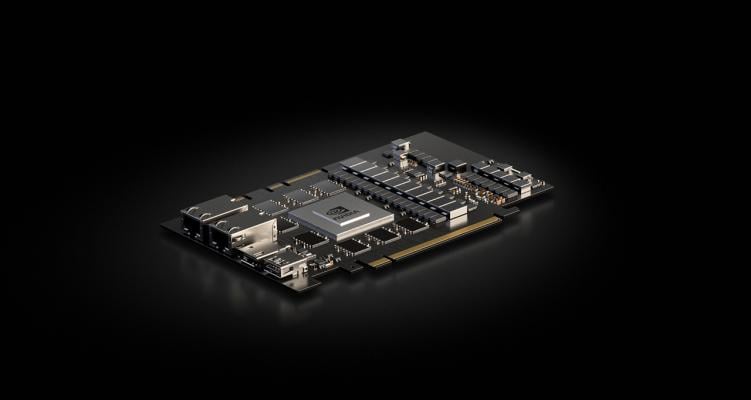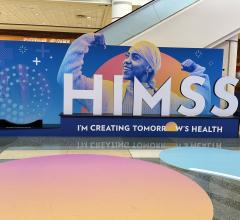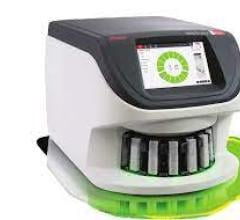
February 13, 2019 — Digital technology company NVIDIA will highlight its newest partnerships to advance the digital transformation of healthcare, and the importance of data centers in those efforts, at the 2019 Healthcare Information and Management Systems Society (HIMSS) conference and exhibition, Feb. 11-15 in Orlando, Fla.
The data center is not one of the first things a hospital administrator probably thinks of when considering how medical care will change in the coming years, but NVIDIA argues that it should be.
The fundamentals of delivering high-quality care while keeping costs in check depend on a modern data center. Digital health, value-based medicine, healthcare consumerism, big data analytics and artificial intelligence (AI) are among the trends that healthcare leaders are grappling with. Having a data center capable of dealing with the growing abundance of data, compute-intensive algorithms and advanced analytics is key.
NVIDIA will be joining partners such as HPE, NetApp, CoreTek and Nutanix at HIMSS19 for talks on the digital transformation of healthcare and its role in revolutionizing medical care facilities.
Some examples of why this digital transformation is so important include:
-
The Association of American Medical Colleges predicts a shortage of up to 120,000 physicians by 2030.1 Finding ways to assist doctors and avoid burnout will be critical;
-
Over 70 percent of medical imaging research is already using deep learning for preventative care, population health and precision medicine;
-
Gartner estimates that “by 2025, 65 percent of all automated healthcare delivery processes will involve some form of AI”;2 and
-
Virtualization enables providers to securely access their patients’ data anywhere and on any device, making it a key technology for telemedicine.
NVIDIA’s single platform for computing optimizes virtualized PCs, clinical informatics and AI to serve the needs of physicians, data scientists, business analysts and IT administrators. It can run machine learning analytics, build and apply AI applications, and provide staff with a high-quality virtual experience while working with medical images, watching a training video or conducting a telemedicine session.
One NVIDIA customer is Nebraska Medicine, an academic health organization consisting of hospitals, specialty medical clinics and healthcare colleges. It offers virtual desktop infrastructure (VDI) to staff in remote medical clinics, providing them with access to file sharing and specialty applications no matter where they are physically, saving time and money.
A VDI solution powered by NVIDIA Quadro Virtual Data Center Workstation (Quadro vDWS) software and NVIDIA Tesla GPUs delivers high graphics quality and fluid image transition for Nebraska Medicine’s radiology department, providing a reliable template for transforming its entire IT infrastructure.
The virtual workstations powered by NVIDIA provided an experience that was “as good as a medical-grade physical workstation,” said Shane Limbach, technical systems senior engineer at Nebraska Medicine.
“With NVIDIA vGPUs, radiologic technologists will have increased accuracy of image interpretation — from detecting a broken bone to early detection of a cancerous tumor,” he said.
In another example, Geisinger, the top healthcare leader in northeastern and central Pennsylvania, is putting deep learning and machine learning into practice — including improving patient survival predictions.
The healthcare system started using electronic health records (EHR) over 20 years ago and is home to some of the most rich and diverse patient data, including longitudinal EHR data linked with imaging data, ECGs and genomic data.
Geisinger used over 40,000 3-D images of the brain to develop and implement a deep learning model on NVIDIA’s computing platform that re-prioritizes radiology worklists for faster diagnosis of brain hemorrhage, resulting in a 96 percent reduction in the time it takes to diagnose patients.
Beyond images there’s an ocean of patient data that is being routinely collected in the form of structured data in the EHR, physician’s notes, device data, imaging studies and genomic data. AI and machine learning help distill key insights from this data and surface timely clinical recommendations to physicians. That is why NVIDIA built the RAPIDS GPU-acceleration platform that can run the entire data science platform on GPUs.
“The future of healthcare will be increasingly data-driven,” said Brandon Fornwalt, M.D., Ph.D., a radiologist and chair of imaging science and innovation at Geisinger. “NVIDIA’s GPU technology enables us to start defining this future now by garnering rapid insights from large clinical datasets with deep learning. We believe this can ultimately enable our patients to live longer, healthier lives.”
For more information: www.nvidia.com
References
-
The Complexities of Physician Supply and Demand: Projections from 2016-2030, Association of American Medical colleges and IHS Markit Ltd.
-
Understand the Value of AI for Healthcare Delivery Organizations, Laura Craft, Gartner Inc., March 28, 2018.


 May 06, 2024
May 06, 2024 








